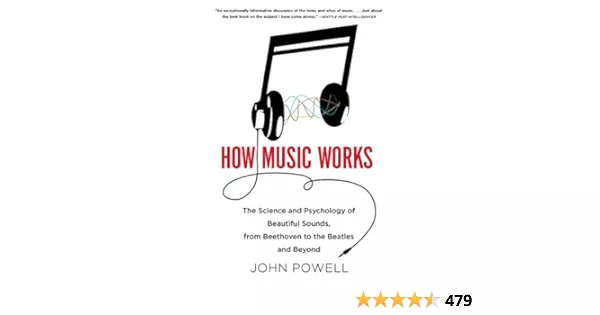Music is a universal language that transcends boundaries, cultures, and generations. It has the power to evoke emotions, spark memories, and create connections between people. Yet, despite its ubiquity, the inner workings of music remain a mystery to many. In this article, we delve into the intricate mechanisms of music, focusing on the groundbreaking work of Powell, a pioneering figure in the field of music theory and composition.
The Origins of Powell’s Theory
Before we can understand Powell’s contributions to the understanding of music, it is essential to grasp the foundations upon which his theory is built. Music theory, as a discipline, has evolved over centuries, with contributions from scholars, composers, and musicians from various cultures and eras.
Powell’s theory builds upon this rich legacy but also diverges in significant ways. Central to his approach is the concept of musical tension and resolution. Powell argues that all music is essentially a journey from tension to resolution, with various elements such as harmony, melody, rhythm, and form working together to create this sense of movement.
The Role of Harmony
Harmony, the simultaneous sounding of different pitches, is a cornerstone of Western music. Powell’s theory emphasizes the importance of harmonic progressions in shaping the emotional trajectory of a piece. He identifies certain chord progressions, such as the classic V-I cadence, as particularly powerful in creating a sense of resolution.
But Powell goes beyond traditional harmonic analysis, delving into the psychological and physiological effects of different chord combinations. Through empirical research and experimentation, he has identified specific chord voicings and progressions that elicit strong emotional responses in listeners. This research has profound implications for composers and performers seeking to evoke specific moods or emotions in their music.
Melody and Motivic Development
In addition to harmony, Powell’s theory places great emphasis on melody and motivic development. Melody, the sequence of pitches that form the main musical theme, plays a crucial role in guiding the listener through the musical journey. Powell identifies certain melodic patterns and structures that have a universal appeal, transcending cultural and stylistic boundaries.
Furthermore, Powell’s theory highlights the importance of motivic development, the process by which a musical idea is elaborated, transformed, and varied throughout a composition. He argues that effective motivic development creates a sense of coherence and unity in a piece of music, drawing the listener deeper into the musical narrative.
Rhythm and Groove
Rhythm, the pattern of beats and accents in music, is another essential element of Powell’s theory. He explores the concept of “groove,” the irresistible urge to move and dance induced by certain rhythmic patterns. Powell’s research into groove draws on diverse musical traditions, from African drumming to funk and hip-hop, highlighting the universal appeal of rhythmic vitality in music.
Moreover, Powell’s theory of rhythm extends beyond mere patterns of notes and rests, incorporating ideas of syncopation, polyrhythm, and metric modulation. He argues that these rhythmic devices can be used to create tension and release, adding depth and complexity to musical compositions.
Form and Structure
Finally, Powell’s theory addresses the overarching form and structure of musical compositions. He identifies certain formal conventions, such as sonata form, theme and variations, and rondo form, as common frameworks used by composers to organize their musical ideas.
However, Powell also emphasizes the importance of innovation and experimentation in musical composition. He encourages composers to break free from traditional forms and structures, exploring new ways of organizing sound and creating meaning.
Practical Applications
While Powell’s theory of music may seem abstract and theoretical, it has numerous practical applications for composers, performers, and music educators. By understanding the underlying principles of tension and resolution, composers can create music that speaks directly to the emotions of their audience.
Similarly, performers can use Powell’s insights to interpret music with greater sensitivity and expressiveness, capturing the subtle nuances of tension and release embedded in the score. And music educators can incorporate Powell’s ideas into their teaching, helping students develop a deeper understanding of the inner workings of music.
Conclusion
Powell’s theory offers a comprehensive and insightful framework for understanding how music works. By exploring the interplay of harmony, melody, rhythm, and form, Powell sheds light on the mysterious alchemy that lies at the heart of music. Whether you’re a composer, performer, or music lover, Powell’s theory provides a valuable toolkit for unlocking the secrets of musical expression.

























